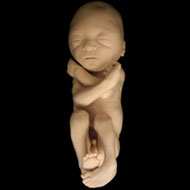Cesarean Section Guide
A cesarean section or C-section is a surgical procedure to deliver a baby through an incision in the mother's belly and uterus. While most women deliver their babies through the birth canal (vaginal birth), there are certain circumstances when a cesarean section is needed.
The reasons for a cesarean section could be planned or unplanned.
Depending on each case, there are different types of cesarean section procedures performed. These include:
- Lower Segment Caesarean Section:This is the most popular and the safest form of C-section where the uterus is opened up from the lower segment and the baby is delivered.
- Emergency C Section: This is performed when there is an emergency condition and the safety of the mother or baby is at risk.
- Elective Caesarean Section (Planned C-Section): The procedure is pre-planned due to medical or personal reasons by the mother and the doctor.
Reasons for a planned cesarean section include:
- Multiple pregnancies
- A previous C-section that may increase the risk of uterine rupture (tearing of the cesarean scar)
- The baby is in breech position or transverse position (not in a head down position) close to the delivery date
- The baby has a birth defect
- The mother has health problems such as heart disease or high blood pressure that could worsen during labor
- The mother has an infection such as genital herpes or HIV that could pass on to the baby during a vaginal birth
- Problems with the placenta such as Placenta previa grade 4
- The presence of tumors or ovarian cysts that may impair a vaginal birth
Reasons for an unplanned cesarean section include:
- Slow or distressed labor
- The baby shows signs of distress during labor such as an abnormal heart rate
- The baby is too big to be delivered normally or the birth canal abnormally narrow
- Problems with the placenta or umbilical cord or leakage of amniotic fluid may harm the baby and result in premature death if the baby is not delivered immediately.
- Maternal distress caused by high blood pressure or excessive bleeding also demands an emergency C-section
How is a C-section performed?
Before any incision is made, the mother is first given local anesthesia to numb the body from chest downwards. Only in rare cases is general anesthesia given as this poses a higher risk to both mother and child. Once the anesthesia has kicked in, the surgeon makes a cut along the pubic hairline or from the navel down to the pubic area. The baby is then lifted out and the placenta removed. The incision area is closed with stitches.
Most women spend three to five days in the hospital after a C-section but it can take up to four weeks or longer to completely recover from the operation.
What about the recovery process with a C-section?
Recovery from a C-section takes significantly longer than from a normal birth. To promote healing and speed up the recovery time, the mother should:
- Rest adequately
- Avoid lifting heavy objects
- Support your abdomen and the area of the incision until fully healed
- Take all the prescribed medication to prevent any infection and reduce pain
- Drink plenty of fluids to prevent constipation and reduce the chance of a urinary tract infection
- Look out for signs of an infection such as high fever, soreness, pain, and discharge from the incision site, or foul smelling vaginal discharge
Over the past forty years, the rate of cesarean sections has increased from one in twenty to one in four births. According to doctors, the C-section poses certain risks to both mother and child that can be avoided with a vaginal birth and should thus be avoided as far as possible.
What are the risks associated with a cesarean section?
While a cesarean section is a relatively safe procedure, it is still a major surgery and carries with it more risks than with a normal birth such as:
- Heavy blood loss
- Infection of the incision site or the uterus
- Blood clots in the lungs or legs of the mother
- Side effects of the anesthesia on the mother and the baby such as vomiting, nausea, and headaches
- Injury to the baby or the mother during the procedure
- Breathing difficulties in the baby especially if the birth was pre-term
- Uterine rupture during labor if the mother gets pregnant again
- Conditions such as placenta previa, placenta accreta, placenta increta, and placenta percreta where the placenta grows low and deep in the uterus and may lead to severe bleeding after delivery.
- Women who have C-sections are less likely to breastfeed than women who have delivered naturally. This could be because of the pain and discomfort caused by the procedure or the prolonged recovery time after the surgery. Since studies show that breastfed babies are healthier than those that are formula fed, it is important to consult with the doctor immediately if there are any issues with breastfeeding after a C-section.


